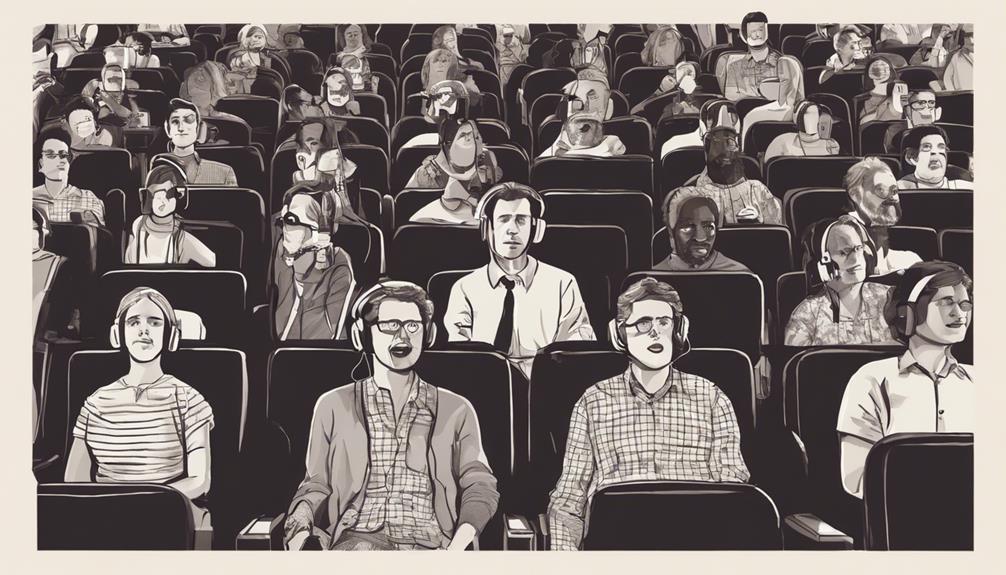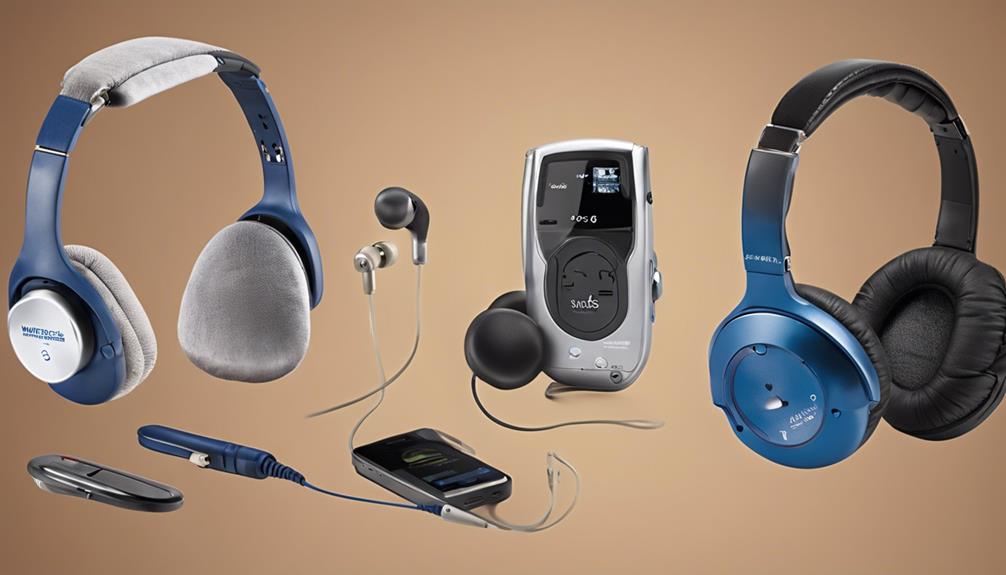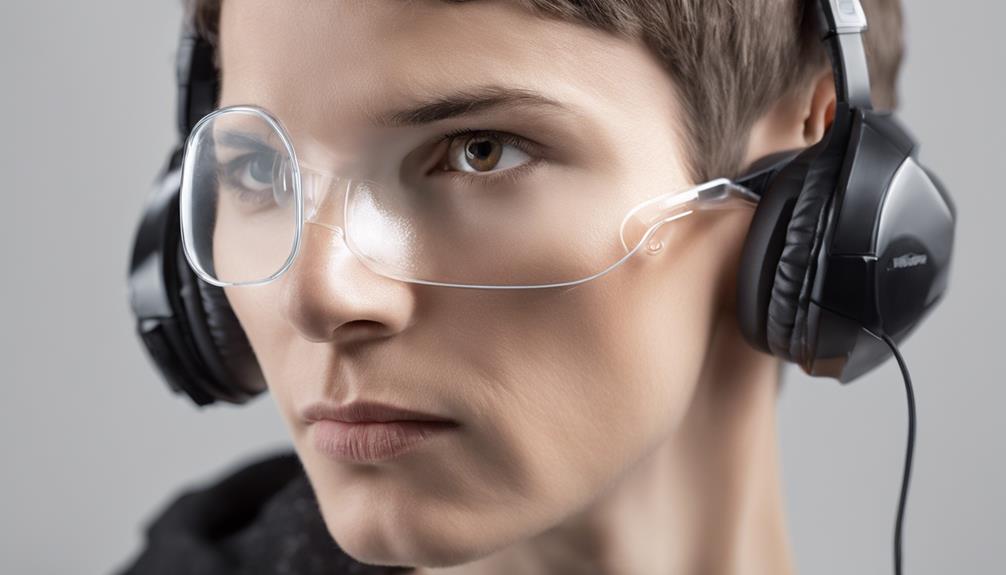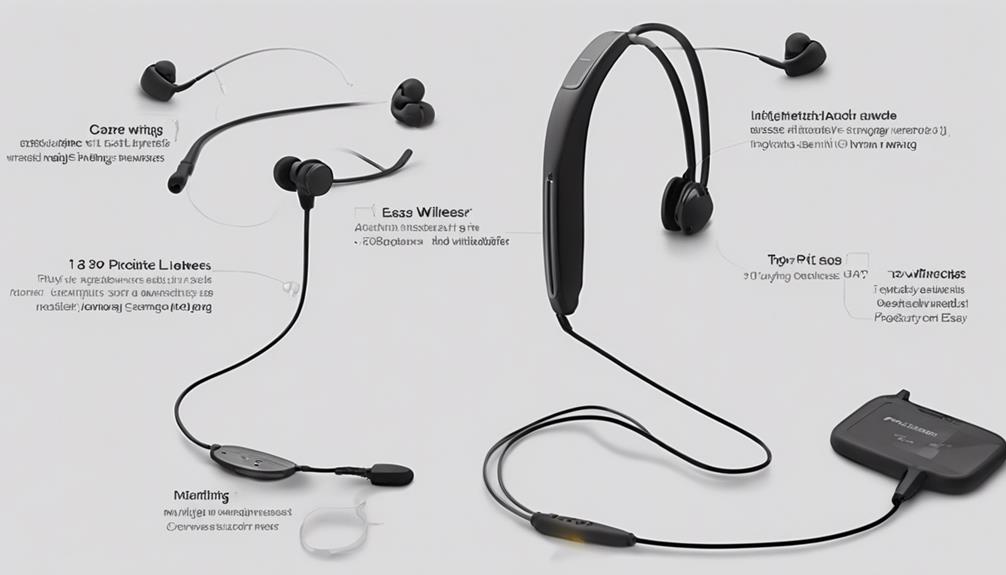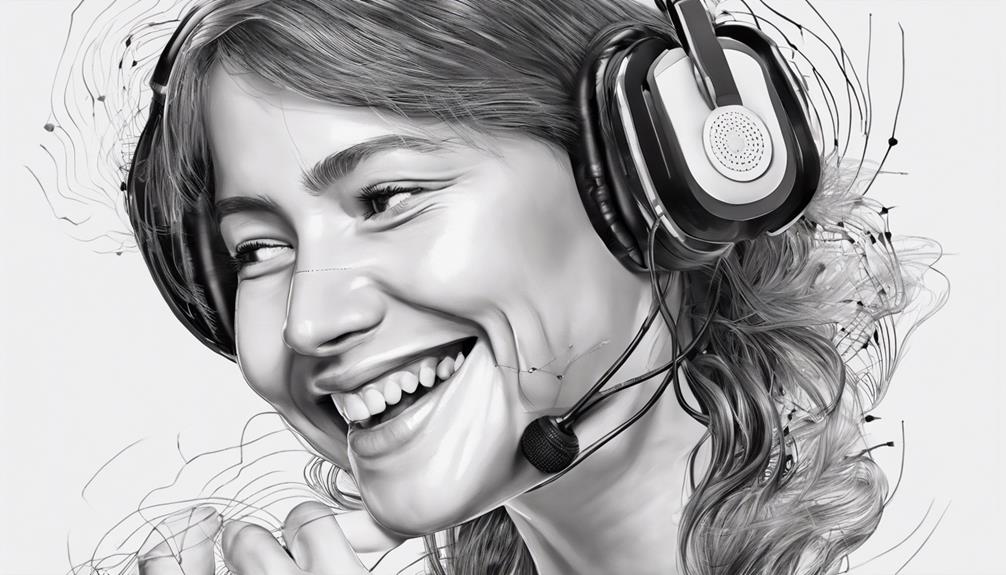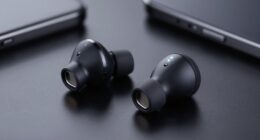As we settle into our seats at the movie theater, the anticipation of the film beginning is palpable.
But have you ever wondered about the invisible technologies that can transform the auditory experience for those with hearing impairments?
Let's explore the array of assistive listening devices available in movie theaters that seamlessly blend into the cinematic magic, ensuring a more inclusive and immersive viewing experience for all.
Key Takeaways
- Infrared, loop, FM systems offer clear sound for hearing-impaired individuals.
- Loop systems transmit audio directly to t-coils in hearing aids.
- Captioning devices provide text display for enhanced accessibility.
- Induction loops and t-coil compatibility improve sound accessibility in theaters.
Infrared Systems
In movie theaters, infrared systems utilize infrared light to transmit audio signals to assistive listening devices, ensuring clear sound for individuals with hearing loss. These systems are a crucial component of theaters aiming to provide an inclusive experience for all patrons. By using infrared technology, theaters can offer a direct and private transmission of audio to compatible receivers, ensuring that users with hearing impairments can enjoy movies with enhanced sound quality and clarity.
The beauty of infrared systems lies in their ability to cater to the specific needs of individuals with hearing loss. Unlike traditional sound systems that may not adequately support those with auditory challenges, infrared systems guarantee a personalized listening experience. By leveraging these systems, theaters can create a more accommodating environment where every moviegoer can immerse themselves fully in the audio-visual spectacle without missing out on the nuances of the soundtracks.
Loop Systems
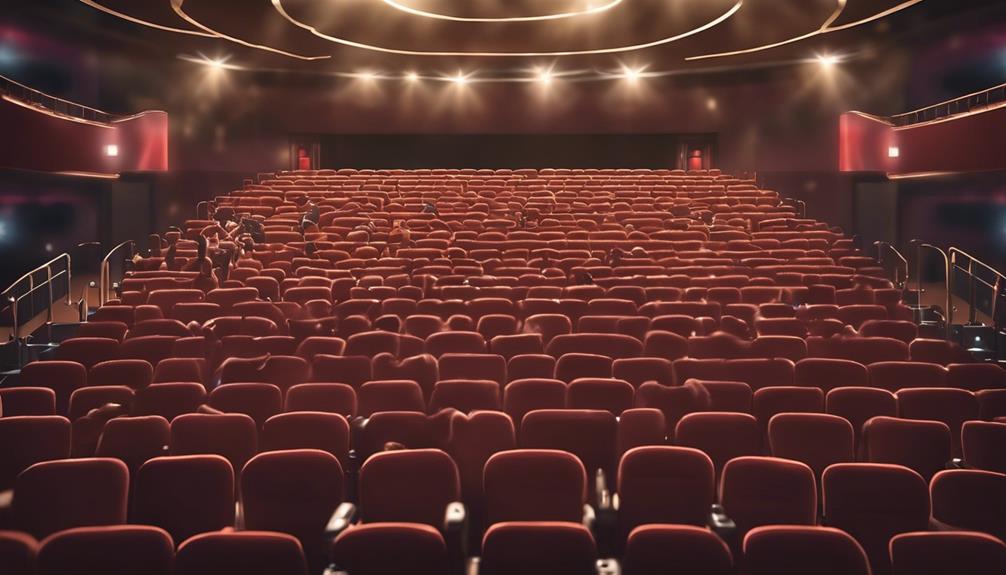
Loop systems in movie theaters are designed to transmit audio directly to hearing aid t-coils, offering a personalized listening experience for individuals with hearing loss. These systems require t-coils to be activated by an audiologist to ensure compatibility with loop technology.
Neck loops play a crucial role in connecting t-coils to public sound systems, enhancing the overall sound quality for users.
Loop System Basics
To effectively utilize loop systems in movie theaters, individuals with hearing aids must have their t-coils enabled by an audiologist. Here are some key basics to understand about loop systems:
- Loop systems in theaters transmit audio directly to enabled t-coils in hearing aids.
- T-coils need to be enabled by an audiologist for loop systems to function effectively.
- Neck loops serve as connectors between t-coil hearing aids and public sound systems in theaters.
- AMC theaters provide receivers and neck loops for hearing aid users with active t-coils, while Cinemark theaters offer AudiLinks model 2 for t-coil users to connect to loop systems.
Loop System Benefits
Utilizing loop systems in theaters equipped with assistive listening devices enhances the auditory experience for individuals with hearing aids by transmitting audio directly to enabled t-coils for optimal sound clarity. T-coils, once enabled by an audiologist, allow users to connect to loop systems seamlessly. This direct transmission reduces background noise, providing a focused sound experience for those with hearing loss.
Cinemark theaters offer the AudiLinks model 2 to enhance the movie-watching experience for t-coil users, while AMC theaters provide receivers and neck loops for active t-coil users to access loop systems effortlessly. The benefits of loop systems extend beyond improved sound quality, offering a more inclusive and enjoyable cinematic experience for individuals with hearing impairments.
Loop System Installation
Moving from the benefits of loop systems in movie theaters, the implementation of loop system installations involves strategically placing electromagnetic wires around the theater space for direct sound transmission to hearing aids with t-coils. This process ensures that individuals with hearing aids equipped with t-coils can receive clear audio signals without background noise interference.
- Precise Placement: Electromagnetic wires are strategically positioned around the theater perimeter for optimal signal transmission.
- T-Coil Activation: Audiologists must activate the t-coils in hearing aids to enable them to pick up signals from the loop systems.
- Growing Popularity: Loop systems, utilizing electromagnetic technology, are becoming more prevalent in the U.S. to enhance hearing accessibility in public venues.
- Seamless Experience: Movie theaters with loop systems offer a discreet and seamless hearing experience for patrons with hearing aids.
Captioning Devices
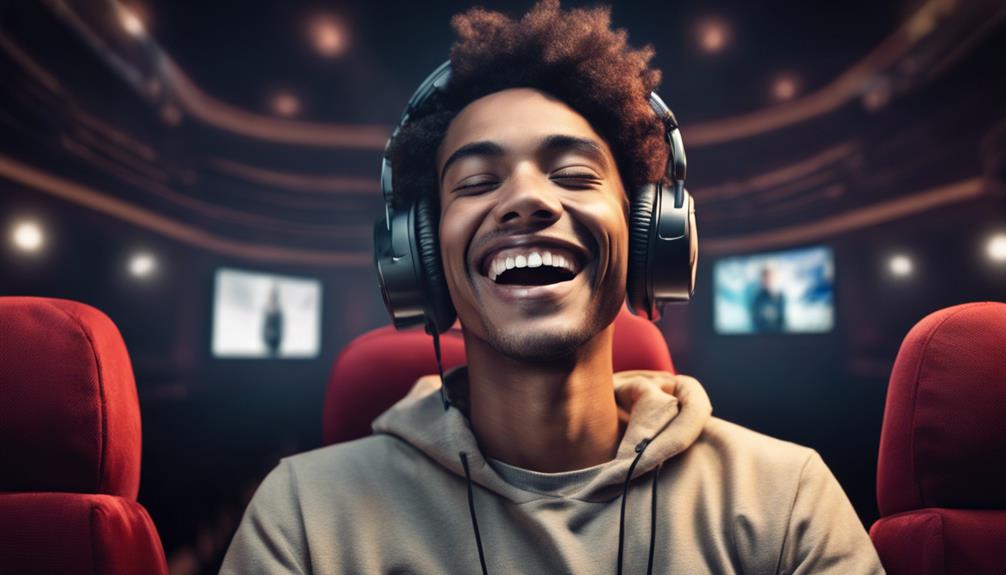
Captioning devices play a crucial role in enhancing the movie-watching experience for individuals with hearing impairments. Understanding the types of captioning available, how captioning technology works, and the benefits it provides can shed light on the importance of these devices in movie theaters.
Types of Captioning
When it comes to enhancing accessibility for individuals with hearing loss in movie theaters, various types of captioning devices are available to provide personalized caption viewing experiences.
- Open captioning displays text on the screen for all viewers in the theater.
- Closed captioning requires a personal device to transmit captions privately to the user.
- Open caption screenings are rare but can be arranged for specific requests at certain theaters.
- Different theater chains offer various closed captioning devices like CaptiView or Sony Access eyeglasses.
Closed captioning and open captioning options aim to make movies more accessible for individuals with hearing loss, ensuring that everyone can enjoy the film with subtitles tailored to their needs.
How Captioning Works
Using advanced technology, captioning devices in movie theaters provide personalized caption viewing experiences for individuals with hearing loss. Open captioning displays text directly on the screen, visible to all moviegoers.
In contrast, closed captioning requires the use of personal devices, such as CaptiView devices offered by AMC Theaters. These devices enable viewers to access captions individually, enhancing the movie-watching experience for those who are deaf or hard of hearing.
Regal Theaters also offer Sony Access eyeglasses for open caption screenings, providing another option for patrons. Cinemark likely provides similar CaptiView closed captioning devices for personalized use, ensuring that individuals with hearing impairments can fully enjoy the cinematic experience through assistive technology like Captioning Devices.
Benefits of Captioning
We can appreciate the significant advantages that captioning devices offer to individuals with hearing loss in enhancing their movie-watching experience.
- Open captioning provides a universally accessible experience by displaying text on the screen for all viewers.
- Closed captioning offers a discreet option, requiring a personal device to transmit captions privately.
- Regal Theaters enhance the viewing experience through Sony Access eyeglasses for open captions.
- AMC Theaters cater to a range of hearing needs with amplified headsets and CaptiView devices for closed captions.
These options ensure that individuals with hearing loss can enjoy movies with increased accessibility and a personalized viewing experience.
FM Systems
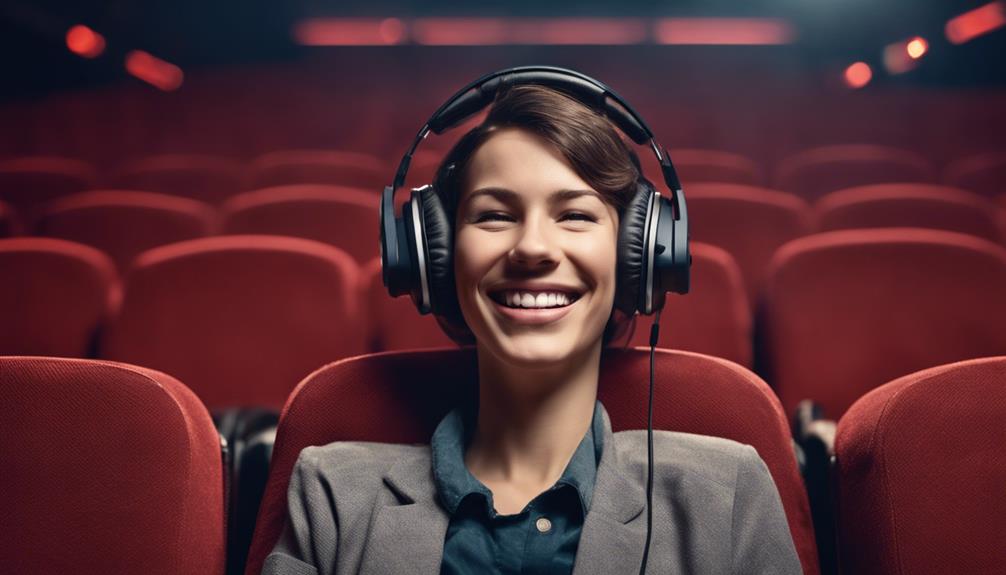
FM Systems in movie theaters employ radio signals to directly transmit audio to personal receivers, enhancing sound clarity and reducing background noise for individuals with hearing loss. These systems are particularly advantageous for those who struggle to discern dialogue in movies due to hearing impairments.
By tuning into the radio signals, users can enjoy a more immersive cinematic experience without being hindered by external noise distractions. The ability to adjust the volume of the FM System allows individuals to personalize their listening experience according to their specific hearing needs.
Movie theaters equipped with FM Systems prioritize inclusivity, providing patrons with hearing impairments the opportunity to fully engage with the audio aspects of the film. Overall, FM Systems play a crucial role in making movie theaters more accessible and accommodating for individuals with hearing challenges, ensuring that everyone can enjoy the magic of cinema without limitations.
Induction Loops
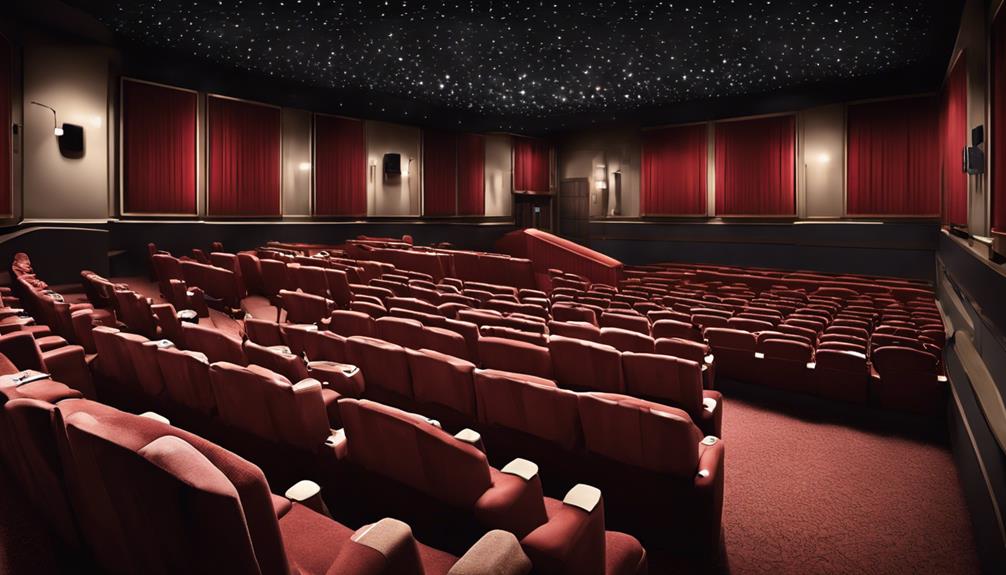
Transitioning from FM Systems, another widely utilized assistive listening option in movie theaters is the use of Induction Loops, which transmit sound directly to hearing aids equipped with T-coils. Induction loops function by creating a magnetic field that's picked up by the T-coil in compatible hearing aids, converting it into sound.
Here are some key points about induction loops:
- Direct Transmission: Induction loops directly transmit audio signals to hearing aids with T-coils enabled, eliminating the need for separate receivers.
- Audiologist Activation: T-coils need to be activated by an audiologist for individuals to benefit from induction loop systems effectively.
- AMC Theater Offerings: AMC theaters provide receivers and neckloops for patrons to connect to induction loops with their hearing aids.
- Cinemark Options: Some Cinemark theaters offer the AudiLinks model 2, catering to individuals with T-coils for an enhanced auditory experience.
Induction loops are a prevalent choice among assistive listening devices in movie theaters, providing accessibility and inclusivity for individuals with hearing impairments.
Hearing Aid Compatibility
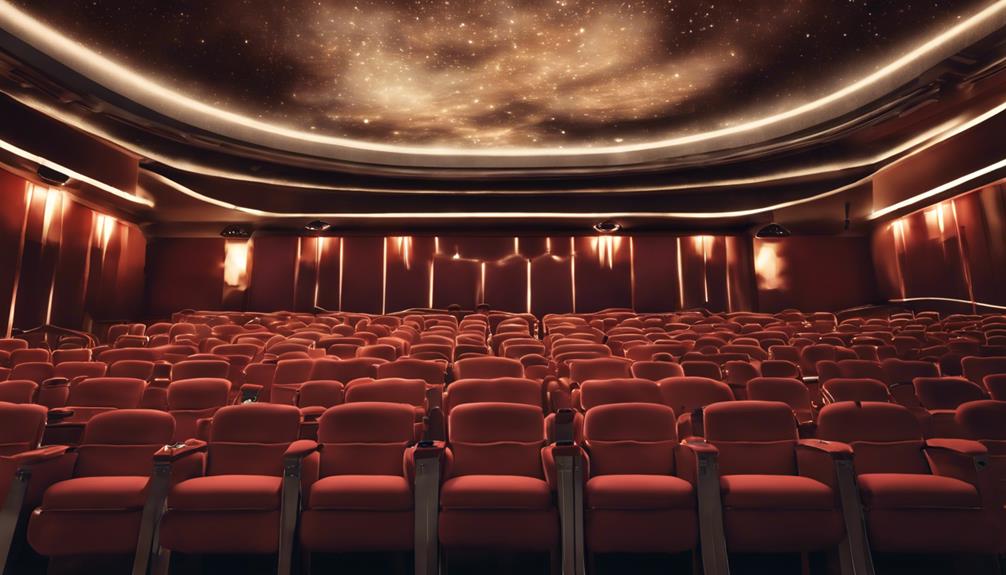
Utilizing neck loops or receivers, hearing aid users can seamlessly connect to movie theater assistive listening systems, enhancing their auditory experience. T-coil enabled hearing aids, commonly found in modern hearing aids, are specifically designed to work with loop systems present in many movie theaters. Major theater chains like AMC and Cinemark offer devices catered to t-coil users, allowing them to optimize their movie-watching experience.
Neck loops serve as a crucial accessory in this setup, transmitting audio signals from the movie theater systems directly to the t-coil enabled hearing aids worn by the users. For those actively using t-coil technology, requesting receivers and neck loops at participating movie theaters can significantly improve sound accessibility during movie screenings. By ensuring compatibility between hearing aids and theater systems through these devices, hearing aid users can enjoy a more inclusive and immersive cinematic experience, enhancing their overall enjoyment of films.
Mobile Apps
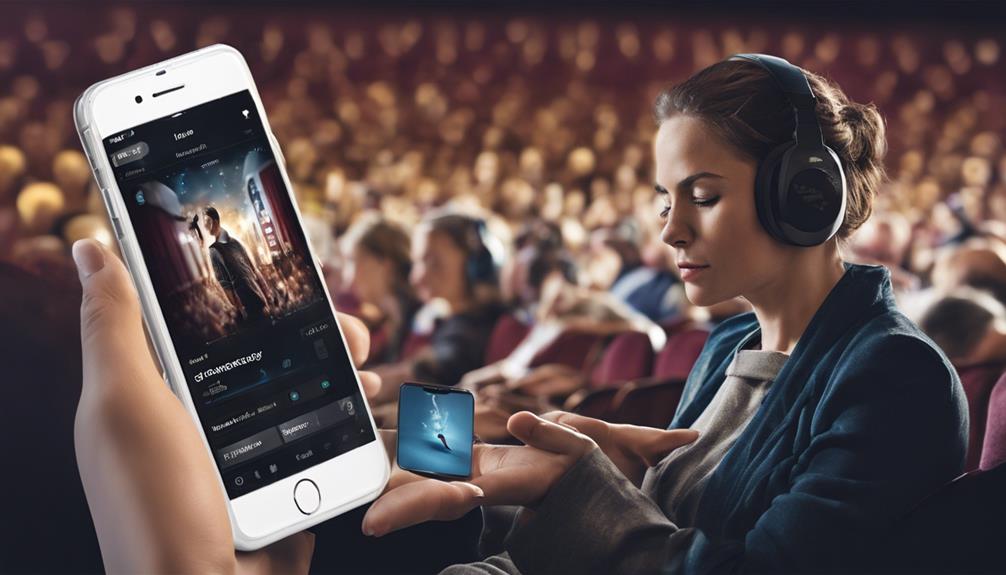
Mobile apps like the MobileConnect App offer users with hearing loss a convenient way to connect headphones to their smartphones for improved audio quality during movie screenings. These apps provide a personalized listening experience by allowing users to tailor volume levels to suit their hearing preferences. With mobile apps, individuals seeking better sound clarity in theaters can enjoy enhanced accessibility features such as receiving captions or audio descriptions directly to their devices.
Here are four key benefits of using mobile apps for improved audio quality during movie screenings:
- Enhanced Audio Quality: Mobile apps like the MobileConnect App ensure users experience improved sound quality through their headphones connected to smartphones.
- Personalized Listening Experience: These apps allow users to customize volume levels, providing a tailored audio experience based on individual hearing needs.
- Convenience and Flexibility: Mobile apps offer convenience and flexibility, allowing users to enjoy movies with better sound clarity anytime, anywhere.
- Accessibility Features: Users can benefit from accessibility features such as receiving captions or audio descriptions on their smartphones, enhancing their movie-watching experience.
Frequently Asked Questions
What Is Assistive Listening Devices in Movie Theaters?
Assistive listening devices in movie theaters enhance sound for patrons with hearing loss. They include FM systems, infrared systems, and personal amplification systems. These devices meet legal requirements and improve sound clarity and volume control.
They aim to reduce background noise interference and enhance dialogue comprehension. Overall, assistive listening devices increase accessibility and inclusivity for all moviegoers.
What Audio Equipment Do Movie Theaters Use?
When it comes to movie theaters and their audio equipment, a range of sophisticated systems may be in play. These include Induction Loop, Infrared, FM, and Bluetooth-enabled devices, each catering to different hearing needs.
These technologies help create an immersive cinematic experience for all patrons. The diverse array of equipment ensures that everyone can enjoy crystal-clear sound and feel truly connected to the audiovisual spectacle on the big screen.
What Is Assisted Listening Device at Cinemark?
At Cinemark theaters, the AudiLinks model 2 is provided as an assistive listening device for t-coil users. Specifically designed to support t-coil users, it enhances access to audio systems.
Neck loops are available for connection to the AudiLinks model 2. The t-coil symbol is displayed on Cinemark's website to indicate loop system availability.
All Cinemark theaters are equipped with loop systems to improve the movie-watching experience for t-coil users.
How Can I Hear Better at a Movie Theater?
To hear better at a movie theater, we should explore various assistive listening devices provided by theaters. These devices can enhance sound clarity and dialogue comprehension.
Adjusting volume settings on assistive listening devices can significantly improve our movie-watching experience.
Additionally, induction loop systems and open caption screenings are available in select theaters for improved listening access.
Researching theater websites for specific options can help us choose the best device for our needs.
Conclusion
In conclusion, movie theaters offer a range of assistive listening devices such as infrared systems, loop systems, captioning devices, FM systems, and more to enhance the movie-watching experience for individuals with hearing loss.
These technologies ensure that everyone can enjoy the latest films with clear audio and accessibility.
So next time you head to the movies, don't forget to take advantage of these modern marvels to truly 'hear' the magic on screen.

